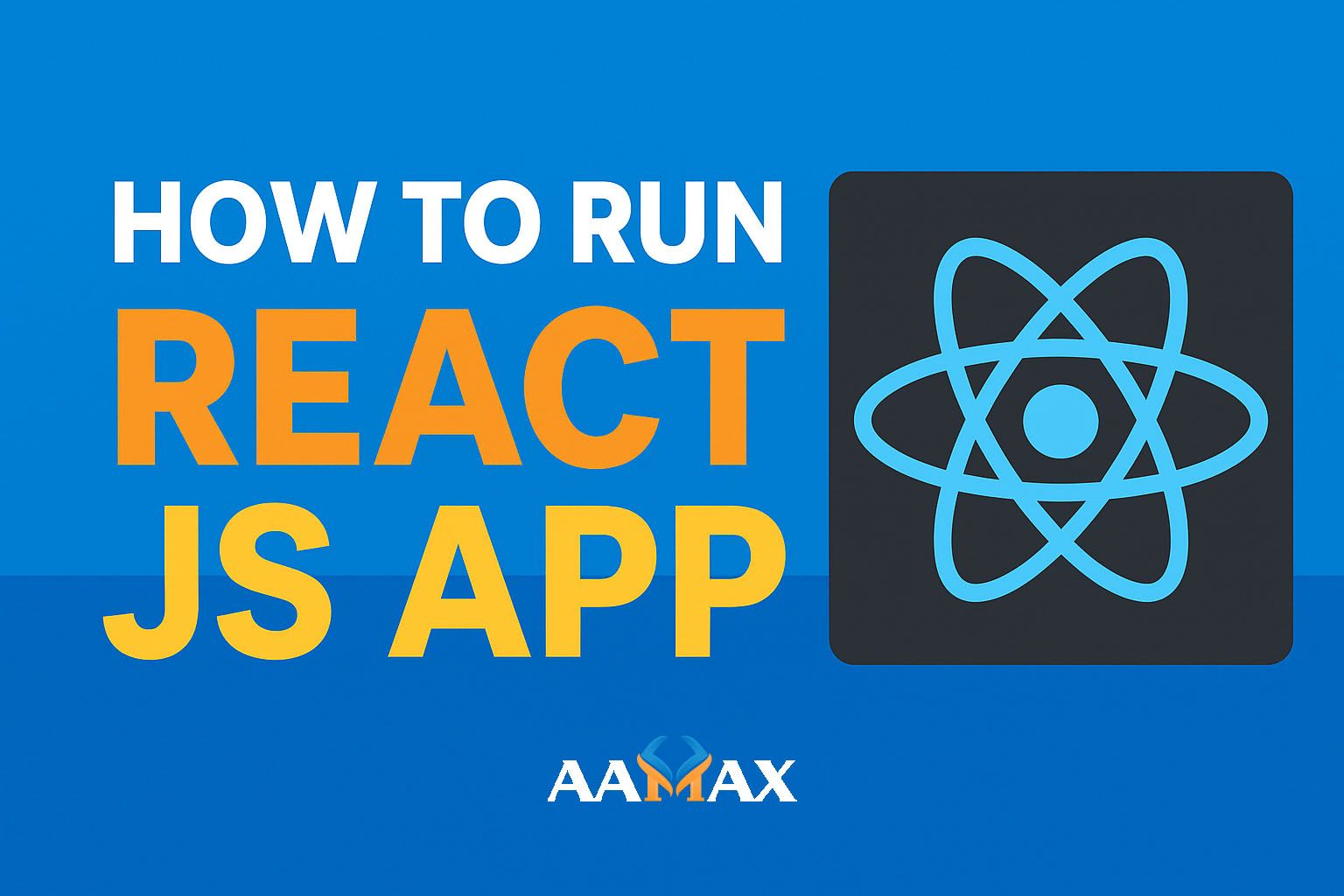
How To Run React JS App
React.js is one of the most popular JavaScript libraries used for building fast, scalable, and interactive user interfaces. Whether you're a beginner just starting with front-end development or an experienced developer diving into modern web technologies, learning how to run a React JS app is a fundamental step.
In this guide, we’ll walk through every detail—from installation to running your React app locally and deploying it online. You’ll also learn best practices and common troubleshooting tips to make sure your project runs smoothly.
🧩 What is React JS?
React.js (often referred to simply as React) is a front-end JavaScript library developed by Facebook. It allows developers to build dynamic, component-based user interfaces that update efficiently without reloading the entire page.
Some of the key features include:
- Component-based architecture – Build UI as reusable blocks.
- Virtual DOM – Efficiently update and render components.
- Declarative views – Easy to manage and debug.
- Strong ecosystem – Huge community, tools, and third-party libraries.
React is the foundation of many modern web apps and is often part of the MERN stack—MongoDB, Express, React, and Node.js—used to create powerful full-stack JavaScript applications.
⚙️ Step 1: Install Node.js and npm
Before running a React app, you must have Node.js and npm (Node Package Manager) installed.
✅ Check if Node.js is installed
node -v
npm -v
If these commands return a version number, you’re good to go. Otherwise, download Node.js from https://nodejs.org and install it. The npm package manager comes bundled with Node.js.
🚀 Step 2: Create a New React Application
React provides a simple way to create a new app using Create React App (CRA).
Run the following command in your terminal:
npx create-react-app my-react-app
Here’s what this command does:
- npx runs npm packages without installing them globally.
- create-react-app is the official React starter toolkit.
- my-react-app is your project folder name.
After the process completes, navigate to your app directory:
cd my-react-app
🧠 Step 3: Understanding the Project Structure
Once your project is created, the folder structure will look like this:
my-react-app/
├── node_modules/
├── public/
├── src/
│ ├── App.js
│ ├── index.js
│ └── ...
├── package.json
└── README.md
- node_modules/ – Contains all dependencies.
- public/ – Contains static assets like
index.html. - src/ – Contains React components and main logic.
- App.js – The main component of your React app.
- index.js – The entry point that renders the
Appcomponent.
🏃 Step 4: Running the React App Locally
Once inside your project folder, run the following command:
npm start
This will start your development server and open your app in the browser (usually at http://localhost:3000).
The app will automatically reload when you make changes in your code, making development quick and efficient.
🔄 Step 5: Building the App for Production
Once your app is ready for deployment, you’ll need to create an optimized production build.
Use this command:
npm run build
This will create a build/ folder containing minified and optimized files for production. You can deploy this folder to any web server or hosting platform.
💡 Step 6: Running a React App from an Existing Project
If you have an existing React app (for example, cloned from GitHub), follow these steps:
- Navigate to the project directory.
- Install dependencies:
npm install - Start the development server:
npm start
This will rebuild the node_modules folder and run the app.
🧰 Step 7: Common Issues and Fixes
Even experienced developers encounter small issues when running React apps. Here are some common ones:
1. Missing Dependencies
If you see an error like “Module not found”, try reinstalling packages:
npm install
2. Port Already in Use
If port 3000 is already in use, React will ask if you want to use another one. Press Y to continue.
3. Environment Variables
React uses .env files to store environment variables. Make sure to set them correctly if your app depends on them.
🔍 Step 8: Using Yarn Instead of npm
If you prefer Yarn (another package manager), install it using:
npm install --global yarn
Then you can use the following commands:
yarn create react-app my-react-app
cd my-react-app
yarn start
Yarn offers faster dependency installation and a cleaner output.
🌐 Step 9: Deploying Your React App
Once built, you can deploy your React app in several ways:
1. Using Vercel or Netlify
These platforms allow one-click deployment directly from GitHub repositories. Just connect your repo and deploy.
2. Hosting on cPanel or Shared Hosting
Upload the contents of your build/ folder to the public_html directory of your hosting.
3. Using Firebase Hosting
Firebase offers a free and simple way to deploy React apps.
npm install -g firebase-tools
firebase login
firebase init
firebase deploy
🧑💻 Step 10: Integrating React with a Backend
React handles the frontend, but you can combine it with a backend API to create a full-stack app. The MERN Stack (MongoDB, Express.js, React, Node.js) is a perfect example.
You can connect your React frontend to an API built with Node.js and Express, and use MongoDB for your database.
Example API call in React:
useEffect(() => {
fetch("http://localhost:5000/api/users")
.then(response => response.json())
.then(data => setUsers(data));
}, []);
🧩 Step 11: Advanced Configuration
If you want more control over your app setup, you can eject from Create React App:
npm run eject
This exposes all configuration files like Webpack, Babel, and ESLint—but be careful! Once ejected, you cannot go back easily.
🧭 Step 12: Best Practices When Running React Apps
- Keep dependencies updated.
- Use environment variables for API keys and secrets.
- Follow folder structure conventions for scalability.
- Lint and format code to maintain consistency.
- Use version control (Git) for collaboration.
🌟 Why Choose React JS for Web Development?
React is ideal for developers who want speed, flexibility, and high performance. It integrates seamlessly with RESTful APIs and backend frameworks. It’s also used by top companies like Facebook, Netflix, and Airbnb.
When building a project that demands scalability, real-time updates, and component reusability, React is one of the best technologies available.
🤝 Hire AAMAX for MERN Stack Development
If you’re looking to build a React or MERN Stack application, you can AAMAX — a full-service digital agency specializing in Web Development, Digital Marketing, and SEO Services. AAMAX’s experienced developers can help you plan, design, and deploy robust applications using React JS and the entire MERN ecosystem.
Whether you need a custom web app, an eCommerce platform, or enterprise-level software, AAMAX has the expertise to deliver high-quality results on time and within budget.
🏁 Final Thoughts
Running a React JS app is a straightforward process once you understand the basics. With the right setup, tools, and best practices, you can create and deploy interactive, modern web applications in no time.
React continues to evolve rapidly—so stay updated with the latest tools and frameworks to keep your projects cutting-edge.
If you need expert help, remember that AAMAX’s team is just a click away, ready to help you build, scale, and grow your digital presence.







